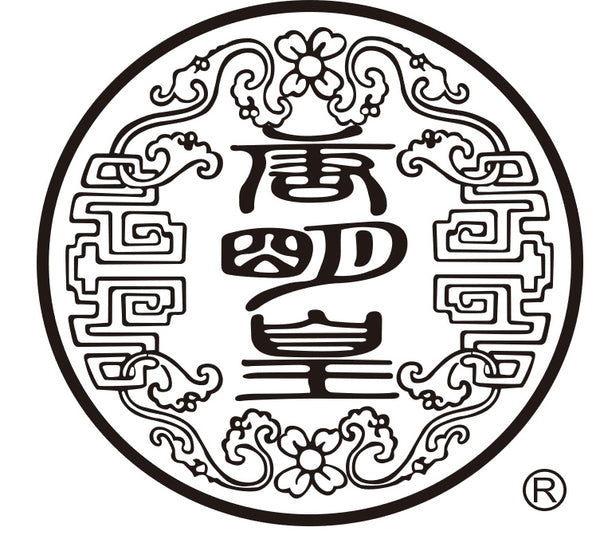
Brewing Techniques for Different Types of Tea
Share
Whether you're new to tea culture or a seasoned tea enthusiast, mastering the right brewing techniques can not only enhance your tea-tasting experience but also transform every cup into an unforgettable indulgence. Let’s explore brewing methods for various types of tea, helping you brew the perfect cup with ease. Not only will this refine your tea skills, but it’ll also give you confidence when chatting with friends about tea!
Green Tea: A Fresh Taste Hinges on Water Temperature and Time
To savor the delicate floral and fruity aroma of green tea, controlling the water temperature and steeping time is key. Green tea’s flavor is highly sensitive; overheating or over-steeping can result in bitterness, losing its refreshing qualities.
- Water Temperature: 75°C to 85°C (ideal for showcasing its fresh characteristics).
- Brewing Time: Single steep: at least 6 minutes; Gongfu style: first brew around 30 seconds, increasing by 10-15 seconds for subsequent brews.
- Recommended Teaware: A transparent glass or fine porcelain teapot allows you to observe the tea leaves’ unfurling and the tea’s color transformation.
- Brewing Ratio: Single steep: about 1:150 (tea to water); Gongfu style: around 1:40.
- Tip: Brewing directly in a glass offers simplicity and lets you appreciate the tea leaves’ elegant movements. For Gongfu brewing, focus on water temperature and precise timing.
Black Tea: Rich Aromas and the Balance of Heat and Time
Black tea’s robust and layered flavor profile requires careful attention to water temperature and steeping duration. Imagine enjoying a hot cup of black tea on a chilly day—it’s pure comfort in a cup.
- Water Temperature: Around 95°C.
- Brewing Time: Approximately 3 to 5 minutes.
- Recommended Teaware: Ceramic or porcelain teapots effectively retain heat and preserve aroma.
- Brewing Ratio: About 1:50 (tea to water).
- Tip: Black tea is best suited for single steeping, as multiple brews dilute its flavor. For a bolder taste, extend the steeping time slightly.
Oolong Tea: Exploring Its Multifaceted Flavors
Brewing oolong tea is not just about controlling water temperature and time; it’s also about unlocking its rich complexity. From the floral fragrance of high-mountain oolong to the robust depth of Tie Guan Yin, each type of oolong tea boasts unique characteristics.
- Water Temperature: 95°C to 100°C.
- Brewing Time: First brew 30 seconds to 1 minute; subsequent brews extend by 10-15 seconds.
- Recommended Teaware: A Yixing clay teapot or porcelain pot. Yixing teapots excel at absorbing aromas and retaining heat.
- Brewing Ratio: 1:20 (tea to water).
- Tip: High-temperature water enhances aroma, while slightly cooler water brings out a sweeter taste. High-quality oolong tea can be brewed 5 to 10 times, with each brew revealing new layers of flavor.
White Tea: Subtle Elegance in Every Sip
White tea is one of the simplest yet most charming teas. Its delicate and fresh flavor calls for careful brewing.
- Water Temperature: 80°C to 85°C.
- Brewing Time: 2 to 3 minutes.
- Recommended Teaware: Glass pots or white porcelain teaware highlight the tea’s pale golden liquor.
- Brewing Ratio: About 1:40 (5 grams of tea leaves for 200 ml of water).
- Tip: Slow steeping allows the leaves to gradually unfurl, enhancing the tea’s sweetness. High-quality white tea can be steeped 2 to 3 times, offering fresh and subtle flavors with each brew.
Pu-erh Tea: Depth and a Lingering Finish
Pu-erh tea stands out with its rich flavor and aged aroma. Brewing Pu-erh is as much a practice of patience as it is a test of technique, rewarding you with a cup rich in complexity and history.
- Water Temperature: 100°C boiling water.
- Brewing Time: Rinse the tea for 10 to 20 seconds, then steep for 10 to 30 seconds for the first brew, gradually increasing the time for subsequent brews.
- Recommended Teaware: Yixing clay or ceramic teapots, suitable for the robust aromas of aged teas.
- Brewing Ratio: 1:20 (7 grams of tea leaves for 150 ml of water).
- Tip: For aged Pu-erh tea, "wake" the leaves by airing them for a few minutes before brewing. Pu-erh is ideal for multiple long steepings, with each brew revealing new layers of flavor.
The Joy of Tea Brewing Lies in Exploration
Each type of tea requires unique brewing techniques, but the joy of discovery is what makes tea brewing so special. Every cup you brew is a conversation with the tea leaves, revealing their aroma, flavor, and the stories they hold. Tea brewing is not just a skill—it’s a journey of the heart.
Are you ready to explore different tea brewing techniques? Try these tips and elevate your tea-tasting experience!
